calsfoundation@cals.org
Parkin (Cross County)
| Latitude and Longitude: | 35º15’48″N 090º34’16″W |
| Elevation: | 210 feet |
| Area: | 2.56 square miles (2020 Census) |
| Population: | 794 (2020 Census) |
| Incorporation Date: | May 10, 1912 |
Historical Population as per the U.S. Census:
|
1810 |
1820 |
1830 |
1840 |
1850 |
1860 |
1870 |
1880 |
1890 |
1900 |
|
– |
– |
– |
– |
– |
– |
– |
– |
– |
– |
|
1910 |
1920 |
1930 |
1940 |
1950 |
1960 |
1970 |
1980 |
1990 |
2000 |
|
– |
1,378 |
1,676 |
1,412 |
1,414 |
1,489 |
1,731 |
2,035 |
1,847 |
1,602 |
|
2010 |
2020 |
|
|
|
|
|
|
|
|
|
1,105 |
794 |
|
|
|
|
|
|
|
Parkin of Cross County is located on the east side of the St. Francis River in the heart of the Delta, the mainstay of Arkansas’s agricultural industry. At the turn of the century, Parkin was one of the richest and most flourishing towns in this region. Gradually, through the twentieth century, the town has slowly diminished as industry has left it.
Parkin can date its recorded history to the sixteenth century. In 1541, Hernando de Soto’s expedition came through northeast Arkansas and camped with a tribe known as the Casqui. The tribe’s village was located in what is now Parkin. Today, Parkin’s main attraction is the preservation of the Casqui mound at Parkin Archeological State Park.
Little is known about the area before 1852, when the first settlers, Reuben and Smash Rodgers, moved to the frontier town known as Smithdale, about two and half miles east of present-day Parkin. In 1871, Dr. John Stoner moved his family to the area and established the first plantation. Stoner built the first schoolhouse for white children on his plantation in 1880.
The St. Louis, Iron Mountain and Southern Railroad laid tracks through Parkin around 1887. William Parkin of Memphis, Tennessee, was in charge of laying the tracks in the Parkin area, which eventually was named for him. The railroad attracted people from Smithdale to move to the current site of Parkin.
Two important companies were formed in Parkin in 1890. The first was a small lumber mill owned by the Fee brothers from Pennsylvania. The second was a small sawmill built by George and Jake Mattox. Both of these small businesses would become major companies in 1902. The Fees’ mill became the Lansing Wheelbarrow Company, and the Mattoxes’ company became the Northern Ohio Lumber Company.
Another major sawmill was established in 1902 by Henry Clay Coldren as the Parkin Cooperage Company. This company and Northern Ohio Lumber merged in 1906 to form the Northern Ohio Cooperage and Lumber Company. This was the beginning of Parkin’s expanding lumber industry.
In 1903, a second school for white children was established by the Lansing Company. Lansing Wheelbarrow Company and Northern Ohio Cooperage and Lumber Company established the Northern Ohio School in 1910. This was a school for African-American children of the two companies’ workers. This school served black children up to the eighth grade. In 1911, the main Parkin Elementary School for white children was built. Additional units were added in 1924.
Parkin was finally incorporated as a town in 1912. In this same year, Parkin made history when a woman came to town to run one of its main industries. Agnes Hamill Park moved to Parkin in 1912 from Michigan to manage the Lansing Wheelbarrow Company, becoming the town’s first woman to hold such a position. Park not only managed this company, but she was also very influential throughout the community. She was active in supporting the local schools, as well as assisting others in buying stocks to organize the First State Bank in 1925.
Throughout the first thirty years of the twentieth century, Parkin faced many natural disasters that would cause its residents to rebuild and start over. The St. Francis River on the west side and the Mississippi River less than forty miles to the east of Parkin caused this town to be located in the center of devastation for the 1912, 1913, 1927, and 1937 floods. In 1912, for example, the St. Francis River and Mississippi River levees broke, causing four to thirty feet of water to inundate Parkin. Residents fled to government tent camps located on Crowley’s Ridge and to live with families in other locations. The 1912 flood was the shallowest when compared to the subsequent devastating floods. In 1928, a tornado ripped through the town, scattering lumber from the Northern Ohio Cooperage Lumber Company, once again causing a large portion of the town to be rebuilt. The Great Depression and the droughts of this time also took a major toll on Parkin, and it took years for the town to completely recover from all of these disasters.
In 1938, Falls Equipment Company was established, changing the area by introducing International Harvester farm machinery. This would cause a turn from the lumber industry to agriculture. By 1946, Northern Ohio Cooperage and Lumber Company closed, ending the lumber industry’s presence in Parkin. In the 1940s, the Lansing Wheelbarrow Company also closed its doors.
During World War II, approximately 9,000 prisoners of war from Germany were housed throughout eastern Arkansas. There were camps in Earle (Crittenden County) and Wynne (Cross County) but farmers in Parkin used some of these soldiers to work on their farms. Summer of My German Soldier, written by Bette Greene, is a novel written from childhood memories about these same prisoners working in Parkin.
In 1941, fifteen one- and two-room plantation schools educated black students. In 1948, an eleven-room high school was built for them. By 1955, all of the black schools were consolidated into one high school and two elementary schools. A new high school was built for white students in 1951. All the schools were integrated to form the Parkin School District in 1971. Parkin schools saw their last days in the 2004–05 school year, when in September 2005, they were consolidated with the Wynne School District.
Parkin was a hotspot for musicians from Memphis to perform. Every weekend, residents from Parkin and the surrounding cities were entertained by different artists. B. B. King frequently played in Parkin before his rise to fame. Musician Chester Arthur “Howlin’ Wolf” Burnett learned to play his harmonica while living in Parkin. Another famous musician, Carl Perkins, told this story about Parkin: After a show in Parkin, while touring with Elvis Presley and Johnny Cash, he overheard someone on the dance floor warning his date to stay away from his new blue suede shoes. He wrote down the words and recorded his song “Blue Suede Shoes” in December 1955. In 1956, it reached the top forty on the rock and roll charts.
Today, Parkin does not have any industry but has several retail businesses. Parkin Archeological State Park’s grand opening was in 1994, and it has since grown into the main attraction of Parkin. School children from around the state and surrounding states visit the park for educational programs.
As a farming community, Parkin continued to thrive throughout the Depression and two world wars, but without any industry and with its schools closed, Parkin faces a steady decline in its population.
For additional information:
Chowning, Robert W. History of Cross County, Arkansas 1955. Wynne, AR: Wynne Progress, 1955.
Cross County Chamber of Commerce and Economic Development Corporation. http://www.crosscountychamber.com/ (accessed August 5, 2022).
Cross County Historical Society. https://www.crosscountyar.org/museum (accessed August 5, 2022).
Jimmie James Collection. Cross County Library, Wynne, Arkansas.
Kimberly Seabaugh
Wynne, Arkansas
 Cross County Map
Cross County Map 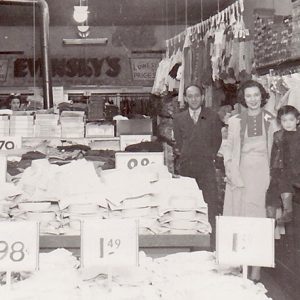 Bette Greene Family
Bette Greene Family  Halls Drug Store
Halls Drug Store 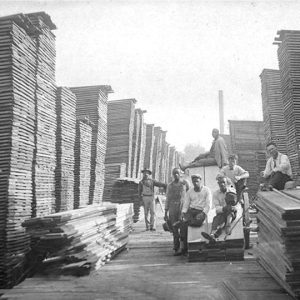 Lansing Company
Lansing Company 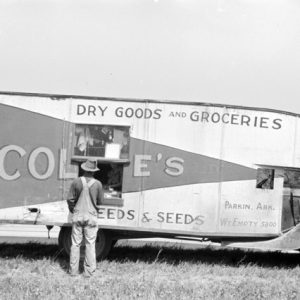 Mobile General Store
Mobile General Store 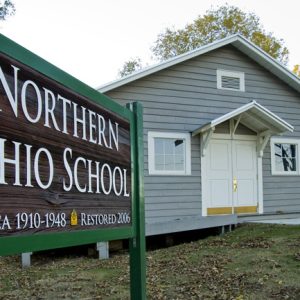 Northern Ohio School
Northern Ohio School  Parkin Archeological State Park
Parkin Archeological State Park 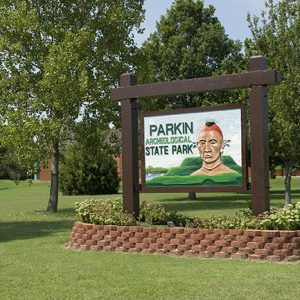 Parkin Archeological State Park
Parkin Archeological State Park 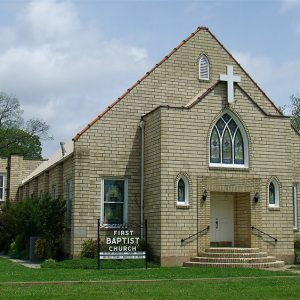 Parkin Baptist Church
Parkin Baptist Church 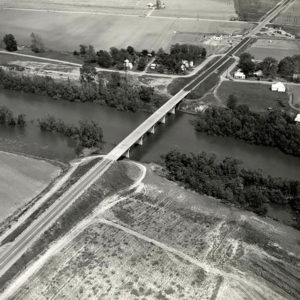 Parkin Bridge over the St. Francis
Parkin Bridge over the St. Francis 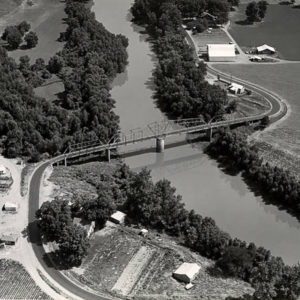 Parkin Bridge over the St. Francis
Parkin Bridge over the St. Francis  Parkin Flood
Parkin Flood  Parkin Flood
Parkin Flood 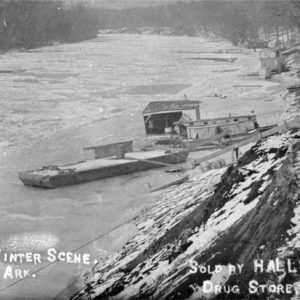 Parkin in Winter
Parkin in Winter 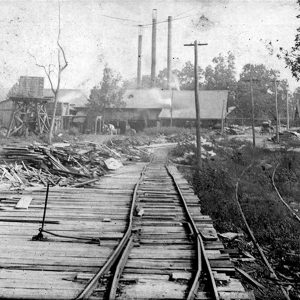 Parkin Mill
Parkin Mill 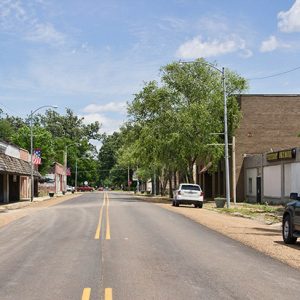 Parkin Street Scene
Parkin Street Scene 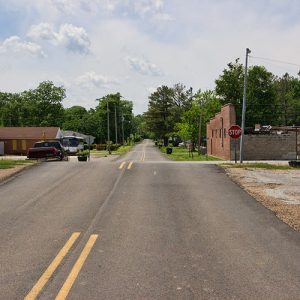 Parkin Street Scene
Parkin Street Scene 




My dad grew up in Parkin. My grandfather ran the gin in Gesik! (Not sure of the spelling.) Lots of wonderful memories. My grandfather along with Earl Ott discovered the majority of artifacts at the Mound Museum.
My grandparents lived in Parkin from 1916 or 1920 through about 1960. They had a dry cleaners on Front St. My family would go to Parkin and stay the summer. It was in the late fifties, and the streets were very crowded on Saturday nights, with migrant workers and others. I wanted to go out from the dry cleaning shop because it was so exciting. My grandmother said to my mother, do not let her go out. Oh well.
I went to first grade in Parkin in 1956. I have great memories of Parkin. We would ride in a wagon pulled by horses. (They could have been mules!) I can remember Saturday night was booming, with people on the sidewalks. The five and dime store was very busy on Saturday nights. I can remember going to the movie theater. And across the tracks in town was a giant cedar tree decorated. There would be Santa sitting on a trailer, and you would get in line and go and sit on Santa’s lap and receive a small brown paper bag filled with an apple, an orange, and candy. Every year I would look forward to this! I would love to revisit Parkin one more time, but I am afraid of getting a ticket for inattentive driving.
A very important event occurred in Parkin, Arkansas, about 1951. The entire south side of Main Street burned down. The fire started in a Western Auto hardware store. The owner had left a kerosene heater in the center of the store and gone to lunch, locking the door behind him.
I had eaten lunch at a small hamburger place next to the hardware store and as I walked past the store, I saw that the heater had apparently leaked onto the wooden floor and set it afire. There was a ring of fire around it.
The fire department didn’t want to break open the door so they sent someone to find the owner. This delay caused most of the stores on that side of the street to burn. If the fire department had come right away, the town could have been saved. Members of the volunteer fire department had also gone to lunch and by the time they were able to arrive at the hardware store, the store was fully engulfed. With only one small truck to fight the fire, there was no chance to save most of the stores on the south side of the street, including the movie theater, the bank, and several general stores.
Juniors and seniors from the school were asked to help battle the fire, but it was fruitless because of the wind. We did get atop buildings on the north side with brooms and buckets of water and put out the embers in order to save the north side.
Jerry Greene, the comic of Parkin School, wrote on the blackboard “Now playing at the Feet and Onions: SMOKE GETS IN YOUR EYES.”
My mother and her family are from Parkin. My childhood vacations were spent in Parkin during the 1970s. Uncle Jiles ran the auto parts store downtown, and Grandfather Ruben Wright ran the gas station. I wonder if the pecan tree is still in the front yard. So many good memories of Parkin.
The last year that Parkin High School was in existence (2004-05 school year), I was the girls’ high school and junior high basketball coach. I did not know when I accepted the job that year that the school would be closing. Teachers and coaches suspected quickly that the school was in trouble. Rumors were floating around early in the school year that things were not looking good. The attendance was low and morale was horrible. But I always felt like the kids were the ones that lost out. It was hard to coach a team when you realized there was not future to build for. Surprisingly, we actually won a few varsity games, and we were competitive in many more. Laisha Weaver was a tremendous basketball player and had an opportunity to play at the next level but declined the offer. All in all, I would not trade that one year for anything. I am proud to have coached those young ladies.